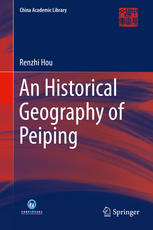

Most ebook files are in PDF format, so you can easily read them using various software such as Foxit Reader or directly on the Google Chrome browser.
Some ebook files are released by publishers in other formats such as .awz, .mobi, .epub, .fb2, etc. You may need to install specific software to read these formats on mobile/PC, such as Calibre.
Please read the tutorial at this link: https://ebookbell.com/faq
We offer FREE conversion to the popular formats you request; however, this may take some time. Therefore, right after payment, please email us, and we will try to provide the service as quickly as possible.
For some exceptional file formats or broken links (if any), please refrain from opening any disputes. Instead, email us first, and we will try to assist within a maximum of 6 hours.
EbookBell Team

0.0
0 reviewsThis book is about the city of Peiping in China, also known as Beijing and Peking, and a city of great historical significance. Divided into three parts, this work explores Peiping first as a frontier city at a time when the Great Wall was established, from the Chou dynasty (ca.1122—220 B.C.) until the T’ang Dynasties up to the Khitan Occupation (A.D. 590—937). The second part explores Peiping as it becomes a national centre, through the Liao Dynasty and the Chin Dynasty, until 1234, and the third part explores how it became the capital of the Chinese empire, until 1911. This work is a historical geography and the introduction details topographical features and geographical relations of the city, describing the way in which the mountains rise from the plain creating concave arms to enclose Peiping, leading to the name, the ‘Bay of Peiping’. We learn that the mountains frequently reach over 3000ft and have practically no foot-hills, whilst the bay itself is filled with sediments of gravel, sand, loam and loess which have been deposited in horizontal strata, to a great depth. Numerous illustrations and figures are included, and readers will see how the city sits between two rivers, the Hun (浑河 or Muddy River) and the Pai (白河 or White River). These chapters reveal how each river has made its contribution to the material development of the city and its environs, including through irrigation and as the Hun River shifted its course. Owing to the geography of the region, almost all roads leading from the northern lands of Mongolia and Manchuria to the great plain of North China in the south are bound to converge at Peiping. The historical consequences of this, as well as local climate conditions and other aspects of geography are explored in this book, which traces the historical rise to eminence of Peiping.